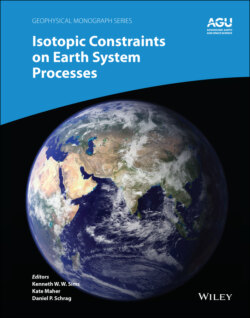Читать книгу Isotopic Constraints on Earth System Processes - Группа авторов - Страница 24
1.2.3. Self‐Diffusion Coefficients
ОглавлениеA very basic type of diffusion coefficient is the self‐diffusion coefficient that measures of the intrinsic mobility of a species. A common experimental approach for measuring self‐diffusion coefficients is to locally alter the isotopic composition of the element of interest in an otherwise homogeneous medium and observe the rate at which the isotopic difference spreads. In effect, this eliminates all diffusive coupling to the other species because their gradients are all zero. The self‐diffusion coefficient of elements in silicate liquids can be very different from each other. For example, Liang et al. (1996a) reported a large set of experimentally determined self‐diffusion coefficients as function of composition in molten CaO‐Al2O3‐SiO2 showing that ~ 10×, ~2×, and ~1 to 2× . These differences in self‐diffusion are in marked contrast to the very similar magnitude of the effective binary diffusion coefficients in a molten rhyolite‐basalt diffusion couple. Fig. 1.1 shows this by overlaying diffusion profiles measured by Richter et al. (2003) in a diffusion couple in which natural rhyolite liquid and a natural basaltic liquid were juxtaposed and annealed in a piston cylinder experiment. The remarkably similar diffusive behavior the major oxides shown in Fig. 1.1 is the result of the fluxes of MgO, CaO, FeO, and K2O all being strongly coupled to the concentration gradient of SiO2 via the off‐diagonal terms of the diffusion matrix. There are two reasons for this strong coupling with SiO2. One reason is that the sum of volume fluxes of all the components must add up to zero and thus the fluxes are rate limited by the large and sluggish volume flux of SiO2 that has to balance the fluxes of the other components. The second reason for the coupling is that the chemical potential gradients of the major oxides, which drive their diffusion, depend on the local SiO2 content of the melt (see Liang et al., 1967 for a detailed discussion of the causes of diffusive coupling in silicate liquids).
